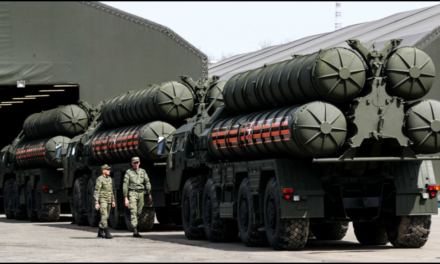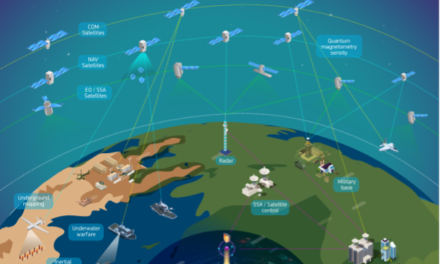Designing life support systems for manned space missions is one of the most complex challenges in aerospace engineering. These systems must ensure astronauts’ survival, health, and comfort in the harsh environment of space, where access to essential resources like air, water, and food is limited. Here are the key challenges involved in designing these systems:
1. Providing Oxygen and Removing Carbon Dioxide
- Challenge:
- In space, there is no atmospheric oxygen, and the buildup of carbon dioxide (CO₂) from respiration can be fatal.
- Key Considerations:
- Oxygen Supply:
- Generating or storing sufficient oxygen for the mission duration is critical.
- Systems like the Oxygen Generation Assembly (OGA) on the International Space Station (ISS) use electrolysis of water to produce oxygen.
- CO₂ Removal:
- Excess CO₂ must be filtered out of the cabin air using chemical scrubbers or advanced systems like the Carbon Dioxide Removal Assembly (CDRA).
- Balance:
- Maintaining a proper oxygen-to-nitrogen ratio in the cabin atmosphere to prevent oxygen toxicity or nitrogen narcosis.
- Oxygen Supply:
2. Managing Water Resources
- Challenge:
- Water is heavy and expensive to transport, but essential for drinking, hygiene, and oxygen generation.
- Key Considerations:
- Recycling:
- Closed-loop water recovery systems recycle wastewater, including urine, sweat, and humidity from the cabin air, into potable water.
- Example: The Water Recovery System (WRS) on the ISS can recover up to 93% of the water used.
- Purification:
- Ensuring recycled water meets stringent safety standards.
- Storage and Transport:
- Minimizing the weight and volume of water storage tanks for long-duration missions.
- Recycling:
3. Temperature and Humidity Control
- Challenge:
- Spacecraft cabins must maintain comfortable temperature and humidity levels despite extreme external conditions.
- Key Considerations:
- Temperature Regulation:
- Balancing heat from human metabolism, electronics, and sunlight with cooling systems.
- Heat exchangers and radiators are typically used to dissipate excess heat.
- Humidity Control:
- Preventing excessive moisture that could lead to mold growth or equipment failure while avoiding overly dry air that can cause dehydration or respiratory issues.
- Temperature Regulation:
4. Food Supply and Nutrition
- Challenge:
- Providing astronauts with a balanced, palatable, and shelf-stable diet for extended missions.
- Key Considerations:
- Storage:
- Food must remain safe to eat and retain nutritional value over long durations.
- Freeze-dried and vacuum-sealed foods are common.
- Variety and Palatability:
- Ensuring a diverse menu to combat food fatigue.
- Waste Reduction:
- Minimizing packaging and managing food waste effectively.
- Future Solutions:
- Developing systems for in-situ food production, such as growing crops onboard spacecraft.
- Storage:
5. Waste Management
- Challenge:
- Handling human waste and cabin trash in a confined, microgravity environment without contamination or odor.
- Key Considerations:
- Solid Waste:
- Space toilets must manage solid and liquid waste separately and securely.
- Example: The Universal Waste Management System (UWMS) on the ISS.
- Recycling:
- Exploring the potential to recycle waste into usable resources, such as water or fuel.
- Odor and Contamination Control:
- Preventing waste from affecting the spacecraft’s air quality.
- Solid Waste:
6. Radiation Protection
- Challenge:
- Space radiation poses significant health risks, including cancer, organ damage, and acute radiation sickness.
- Key Considerations:
- Shielding:
- Designing spacecraft with materials like polyethylene or water to absorb radiation.
- Monitoring:
- Using dosimeters to track radiation exposure in real-time.
- Mission Planning:
- Limiting time spent in high-radiation environments, such as solar storms or areas near Jupiter’s intense magnetic field.
- Shielding:
7. Microgravity Effects on the Human Body
- Challenge:
- Long-term exposure to microgravity causes muscle atrophy, bone density loss, and fluid redistribution.
- Key Considerations:
- Exercise Systems:
- Astronauts must exercise regularly using specialized equipment like treadmills and resistance machines to mitigate muscle and bone loss.
- Fluid Redistribution:
- Managing changes in bodily fluids that can lead to vision problems or other health issues.
- Future Considerations:
- Investigating artificial gravity systems, such as rotating habitats.
- Exercise Systems:
8. Psychological and Social Factors
- Challenge:
- Astronauts face stress, isolation, and confinement in space, which can impact mental health and mission success.
- Key Considerations:
- Environmental Design:
- Creating a cabin layout that supports privacy, social interaction, and a sense of normalcy.
- Support Systems:
- Providing communication with family, team-building activities, and mental health resources.
- Training:
- Preparing astronauts to handle psychological challenges through rigorous pre-mission training.
- Environmental Design:
9. Reliability and Redundancy
- Challenge:
- Life support systems must be fail-safe and continue operating in emergencies.
- Key Considerations:
- Redundancy:
- Critical systems are duplicated to ensure uninterrupted operation.
- Maintenance and Repairs:
- Systems must be designed for ease of maintenance and repair by astronauts in space.
- Testing:
- Extensive pre-mission testing to simulate various failure scenarios.
- Redundancy:
10. Scalability for Long-Duration Missions
- Challenge:
- Designing life support systems for extended missions, such as those to Mars or beyond.
- Key Considerations:
- Resource Independence:
- Reducing reliance on resupply missions through closed-loop systems.
- In-Situ Resource Utilization (ISRU):
- Using local resources, such as extracting water from Martian soil, to support life.
- Durability:
- Ensuring systems can withstand years of operation with minimal maintenance..
- Resource Independence:
Designing life support systems for manned space missions requires solving numerous technical, physiological, and psychological challenges. These systems must be efficient, reliable, and self-sustaining to ensure astronaut health and mission success.













